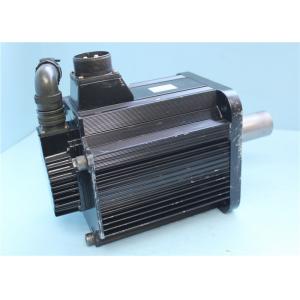New Yaskawa AC Servo Motor 42.1A 1500RMP SGMG-55A2A Industrial Servo Motor
Specifications
Current: 32.8A
Volatge: 200V
Power :4400W
Max speed: 1500rpm
Encoder: 17bit Absolute encoder
Load Inertia JL kg¡m2¢ 10−4: 0.026
Shaft: straight without key
OTHER SUPERIOR PRODUCTS
Yasakawa Motor, Driver SG- Mitsubishi Motor HC-,HA-
Westinghouse Modules 1C-,5X- Emerson VE-,KJ-
Honeywell TC-,TK- Fanuc motor A0-
Rosemount transmitter 3051- Yokogawa transmitter EJA-
Contact person: Anna
E-mail: wisdomlongkeji@163.com
Cellphone: +0086-13534205279
Similar Products
| SGMG-20A2AAB |
| SGMG-20A2AB |
| SGMG-20A2ABC |
| SGMG-20A2ABS |
| SGMG-20A2BB |
| SGMG-20A2BBB |
| SGMG-20ASA |
| SGMG-20AWA |
| SGMG-30A2A |
| SGMG-30A2AAB |
| SGMG-30A2AB |
| SGMG-30A2ABC |
| SGMG-30A2ABS |
| SGMG-30AWA |
| SGMG-30V2AB |
| SGMG-40V2AB |
| SGMG-44A2AAB |
| SGMG-44A2AB |
| SGMG-44A2ABC |
| SGMG-44ASAAB |
| SGMG-44V2AB |
| SGMG-55A2A |
| SGMG-55A2AAB |
| SGMG-55A2AB |
| SGMG-55A2ABC |
| SGMG-60A2BBB |
| SGMG-60A2BBC |
| SGMG-75A2AAB |
| SGMG-75A2AB |
| SGMG-75A2ABC |
This method is a combination of the situational and analytical methods. In motor learning both methods intertwine and complement each other. First, individual elements are practised, then there is a gradual shift to practising the entire technique and, finally, some elements are practised again to perfection. In the case of beginners, a stronger emphasis is placed on the situational exercise, while the analytical exercise is merely complementary. Irrespective of the applied method, care should be taken throughout the process that the incorrect notions of movement do not consolidate and produce errors. Only a sufficient quantity of movements may produce an adequate quality of movements. It should be noted that there is no universal method to be applied under any circumstances and by anyone. When applying any of the methods, the following has to be considered: • The application of a learning method depends on biological and calendar age, foreknowledge, movement experience and information regarding movement; • Attention has to be focused on the causes of incorrect movements, instead of their consequences; • Causes of incorrect movements may be: incorrect notions, a lack of motor abilities (agility, strength, coordination), an unfavourable morphological constitution; • First, gross errors have to be eliminated, as the minor ones often stem from them;
• The sooner the errors are corrected, the lesser the chance of them becoming automatised;
• One-time errors should never be corrected if they occur by coincidence;
• Errors and shortcomings should be rectified in the order in which they appeared;
• The correction process should not emphasise only the shortcomings, but also positive thinking, progress and trust;
• Instructions have to be in tune with the learners' motor sensations;
• Instructions have to be adapted to the learners' age and maturity;
• A variety of words, codes, illustrations, demonstrations, imitational exercises should be used to influence the movement patterns;
• The instructor should commend successful technique execution;
• The instructor should evaluate the technique from various angles and perspectives;
• When correcting errors, the instructor should protect the learner's privacy and should never admonish a learner in front of his colleagues.

